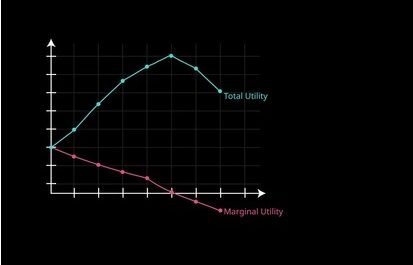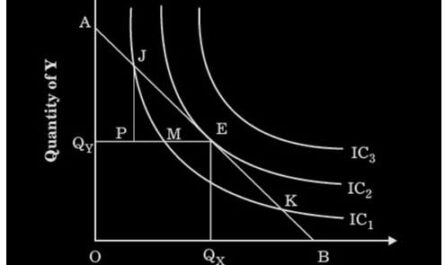🔄 Definition of the Law of Marginal Utility
The Law of Marginal Utility states:
“As a person consumes more units of a good or service, the additional satisfaction (marginal utility) derived from each additional unit tends to decrease.”
In simple terms, the more you consume something, the less pleasure or utility you get from consuming additional units.
🍕 Example to Understand Better
Imagine you’re eating slices of pizza:
-
1st slice – extremely satisfying (high utility)
-
2nd slice – still satisfying, but slightly less
-
3rd slice – just okay
-
4th slice – not much appetite left, less enjoyment
-
5th slice – you’re full, it might even feel unpleasant
Here, the utility decreases with each additional slice, illustrating diminishing marginal utility.
🔢 Types of Utility
-
Total Utility (TU): Total satisfaction from consuming all units
-
Marginal Utility (MU): Additional satisfaction from consuming one more unit
Formula:
MU = Change in TU / Change in Quantity
📉 Law of Diminishing Marginal Utility
The Law of Diminishing Marginal Utility is a more precise expression. It implies that after a certain point, consuming more units will bring lesser and lesser utility, and eventually, it might become negative (disutility).
This law holds true under certain assumptions:
-
The commodity is homogeneous
-
Consumption is continuous
-
The consumer is rational
-
The tastes and preferences remain unchanged
🧮 Real-Life Applications
1. Pricing Strategies
Businesses use this law to set price points and create bulk discounts. For example, a second product is offered at a lower price because its marginal utility is less.
2. Government Policies
In progressive taxation, higher income is taxed at a higher rate, assuming the marginal utility of income decreases as income rises.
3. Consumer Behavior
Explains why people seek variety in choices — to maximize utility and avoid diminishing satisfaction.
🧠 Importance in Economics
-
Explains rational consumption choices
-
Justifies law of demand (as marginal utility falls, demand decreases)
-
Helps in resource allocation decisions
-
Basis for consumer equilibrium and indifference curve analysis
⚖️ Criticisms of the Law
Though widely accepted, the law has limitations:
-
Assumes utility is measurable (which is subjective in reality)
-
Does not apply to addictive goods or hobbies
-
Neglects interdependence of goods (complementary or substitute)
💰 Pricing Strategy and the Law of Marginal Utility
One of the most practical applications of the Law of Marginal Utility is seen in how businesses set their pricing strategies. Since the utility or satisfaction from consuming additional units of a product decreases over time, companies often adjust their pricing accordingly to maintain consumer interest and increase sales.
📦 1. Bulk Discounts and Combo Offers
Businesses offer discounts on additional units of a product. For example:
-
Buy 1 for ₹100
-
Buy 2 for ₹180
-
Buy 3 for ₹240
Why? Because the marginal utility of the second or third unit is less than the first. The lower price encourages the customer to buy more, compensating for the decreasing satisfaction with added value or savings.
🍔 2. Combo Meals in Restaurants
Instead of selling each item separately, restaurants bundle them into a meal combo. The customer might not want fries or a drink initially, but offering them together at a discounted price increases the total perceived value — even if the marginal utility of those items is lower.
🛒 3. Freemium and Tiered Pricing Models
Software companies use freemium pricing — offering basic features for free and charging for advanced usage. As users derive initial value for free (high marginal utility), they are then nudged toward paying for premium features once the base satisfaction is met.
📉 4. Declining Price for Digital Goods
E-commerce platforms may reduce prices for digital products like eBooks, software licenses, or media with multiple downloads or bundles. Since consuming more of the same type of content brings less satisfaction, lower pricing compensates for the diminishing marginal utility.
🧾 Summary of Pricing Insights:
-
Pricing reflects consumer satisfaction levels.
-
Lower prices for additional units encourage bulk buying.
-
Smart pricing helps businesses match declining utility with attractive value.
-
Understanding marginal utility allows companies to maximize revenue while keeping customers satisfied.
✅ Conclusion
The Law of Marginal Utility remains a central idea in understanding how people make choices, how markets behave, and how value is perceived. Even though it has its limitations, it provides a strong foundational framework for analyzing human consumption and market dynamics. Whether you’re planning a marketing campaign or studying consumer psychology, this law offers crucial insights into the human mind and economy.





